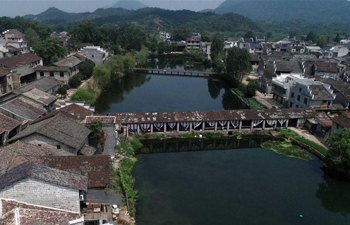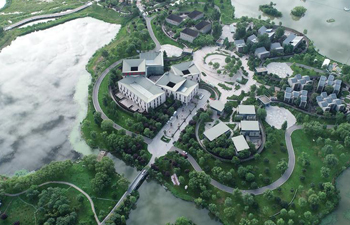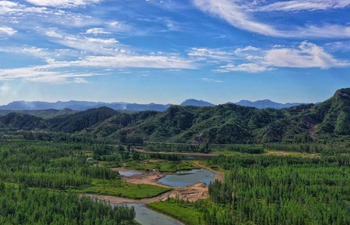LOS ANGELES, Aug. 25 (Xinhua) -- The movement in the atmosphere of carbon monoxide is associated with fires in Brazil's Amazon region, according to a release of NASA's Jet Propulsion Laboratory (JPL).
The association is reflected in new data from NASA's Atmospheric Infrared Sounder (AIRS) instrument aboard the Aqua satellite.
According to the JPL, this time series mapped carbon monoxide at an altitude of 5,500 meters from Aug. 8 to 22. As the series progressed, the carbon monoxide plume grew in the northwest Amazon region, then drifted in a more concentrated plume toward the southeastern part of the country.
Each "day" in the series is made by averaging three days' worth of measurements, a technique used to eliminate data gaps, according to the JPL.
As a pollutant that can travel large distances, carbon monoxide can persist in the atmosphere for about a month. At the high altitude mapped in these images, the gas has little effect on the air humans breathe. However, strong winds can carry it downward to where it can significantly impact air quality, said the JPL.
Carbon monoxide plays a role in both air pollution and climate change.
AIRS senses emitted infrared and microwave radiation from Earth to provide a three-dimensional look at Earth's weather and climate.
With more than 2,000 channels sensing different regions of the atmosphere, the instruments create a global and three-dimensional map of atmospheric temperature and humidity, cloud amounts and heights, greenhouse gas concentrations and many other atmospheric phenomena, according to the JPL.













